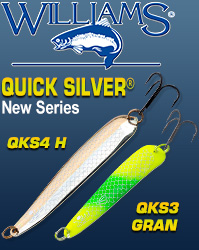DNR joins in cooperative effort to restore Little Plover River
January 11, 2013
Contact(s): Larry Lynch (608) 267-7553; Eric Ebersberger (608) 266-1722
MADISON – State groundwater, agricultural, academic and local government officials are developing a sophisticated computer model aimed at helping maintain healthy water levels in the river.
The Little Plover is a class 1 trout stream in an area with significant demands on groundwater from municipal, agricultural and industrial concerns.
“Our goal is to create a tool that leads to science-based solutions in protecting the Little Plover environmentally, along with protecting the local economy and water quality,” said Ken Johnson, who leads water programs for the state Department of Natural Resources. “We expect that what we learn from this Little Plover model will be useful for other areas of the state as well.”
DNR, the University of Wisconsin, the Wisconsin Potato and Vegetable Growers Association, the Village of Plover, the Wisconsin Geological and Natural History Survey (UW-Extension) and the United States Geological Survey have all agreed to work on the project. This brings an impressive array of expertise to the endeavor, Johnson said.
The group will assess the current state of science regarding groundwater and surface water interaction in the Little Plover River watershed and will develop a groundwater flow model to simulate the local groundwater and surface water systems.
A second phase of the modeling will develop tools to evaluate various pumping scenarios and water management strategies to ensure the health of the Little Plover River. The project will take about two years, Johnson said.
The Little Plover River has experienced periodic low flows for years and has lacked sufficient flows during dry periods, says Eric Ebersberger, who leads DNR’s water use section.
A local stakeholders group has made progress in building cooperation, and ground water users have significantly changed operations as they search for voluntary solutions to protect the Little Plover. The modeling effort hopes to build on this cooperation and to identify additional actions to keep healthy water levels in the river, Ebersberger says.
Last year’s drought aggravated low stream flow conditions in the area.
“It’s become clear during the past year that we needed to create a more robust scientific model for the Little Plover, to further the ongoing cooperative efforts that have yielded positive results,” Ebersberger said. “Additionally, the detailed modeling study will support the development and evaluation of more comprehensive management approaches.”









